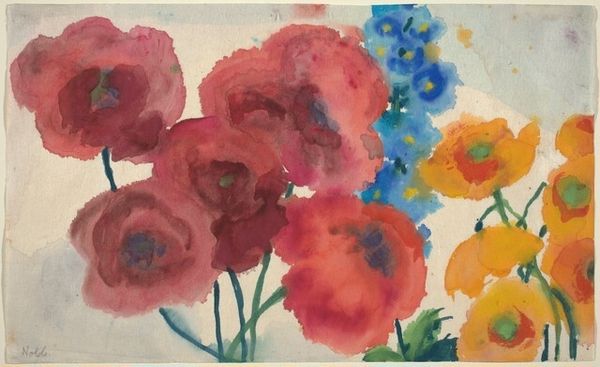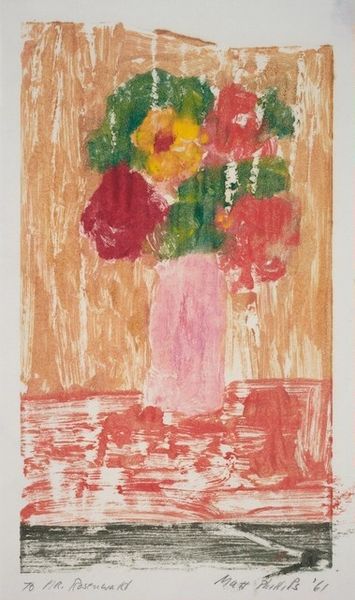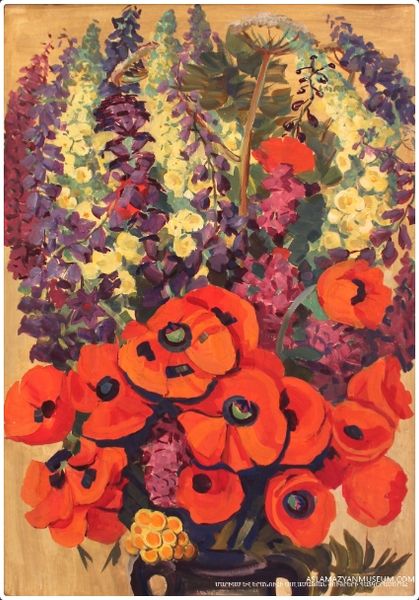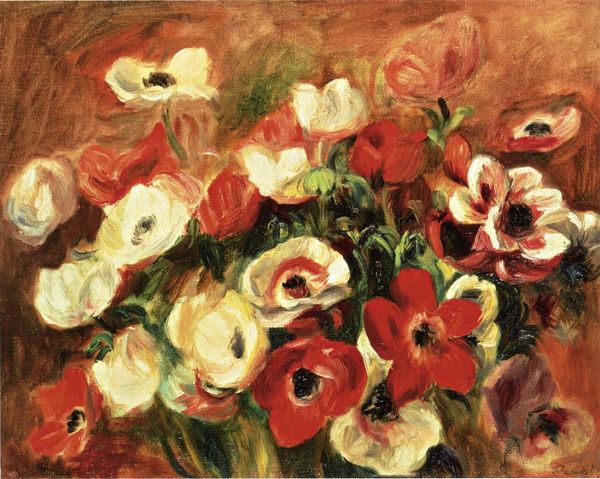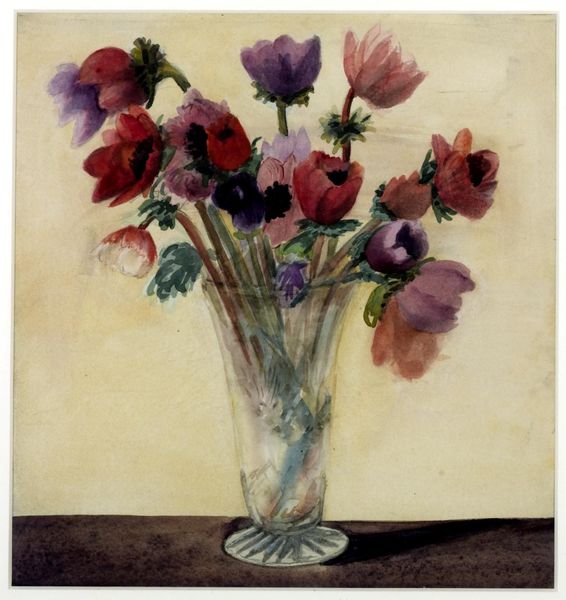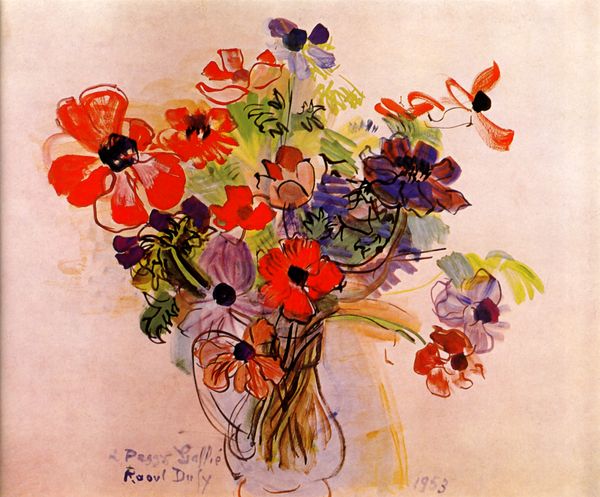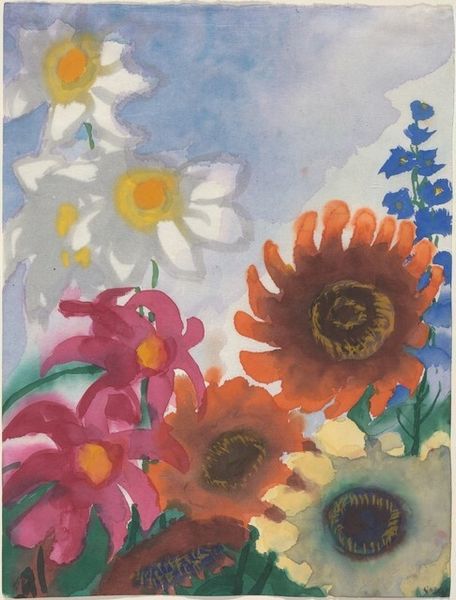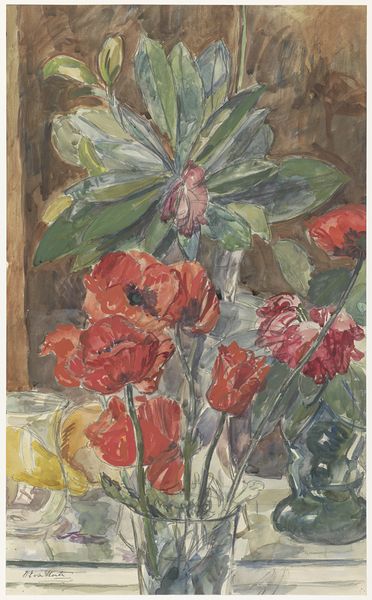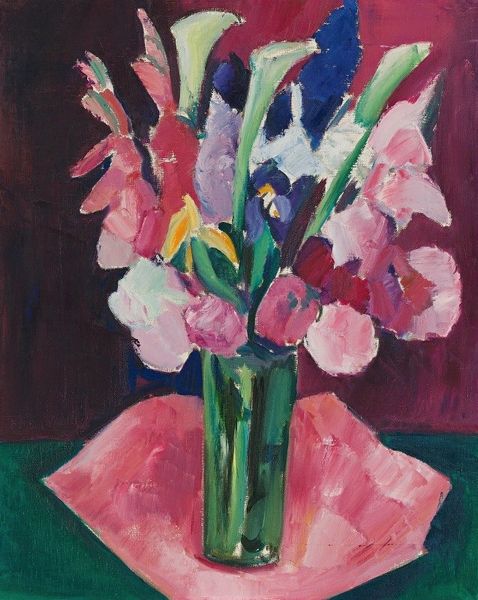
Dimensions: overall: 23.5 x 46.9 cm (9 1/4 x 18 7/16 in.)
Copyright: National Gallery of Art: CC0 1.0
Editor: Here we have Emil Nolde's "Anemones" from around 1937, a watercolor painting bursting with blooms. I’m immediately struck by how the red blossoms seem to glow, despite the somewhat muted background. It feels both vibrant and a little melancholic, doesn’t it? What draws your eye when you look at this work? Curator: It's funny you say melancholic, because for me, there’s almost a defiant joy in that bold color, like a final, furious hurrah against the gathering storm clouds of the era. Nolde was branded a “degenerate” artist by the Nazis, forbidden to paint. Do you see those translucent washes? The way the red bleeds into the paper? To me, that whispers of a secret rebellion, a flowering that authority couldn't quite crush. Look at that bold stroke there, does that resonate with your idea of rebellion? Editor: I hadn't thought of it that way, but that context really shifts my perspective. The fragility of the watercolor, which I initially saw as sadness, now feels like vulnerability made powerful. It is incredible that he kept creating despite everything. Curator: Precisely. And watercolours were often dismissed as just sketches, preparatory studies. This act of rendering them as his key paintings might even be read as subtle criticism against these totalitarian ideas. And how does it strike you? This intimate approach of an art material? Editor: It makes the artwork feel more personal, as if he’s sharing something intensely private with us. I’d say the painting moves from quiet sadness to an explosion of colour. Thank you for helping me dig deeper, it certainly offers a richer understanding. Curator: And thank you! It's these conversations that breathe new life into art, transforming simple paintings into meaningful, even rebellious stories.
Comments
No comments
Be the first to comment and join the conversation on the ultimate creative platform.
